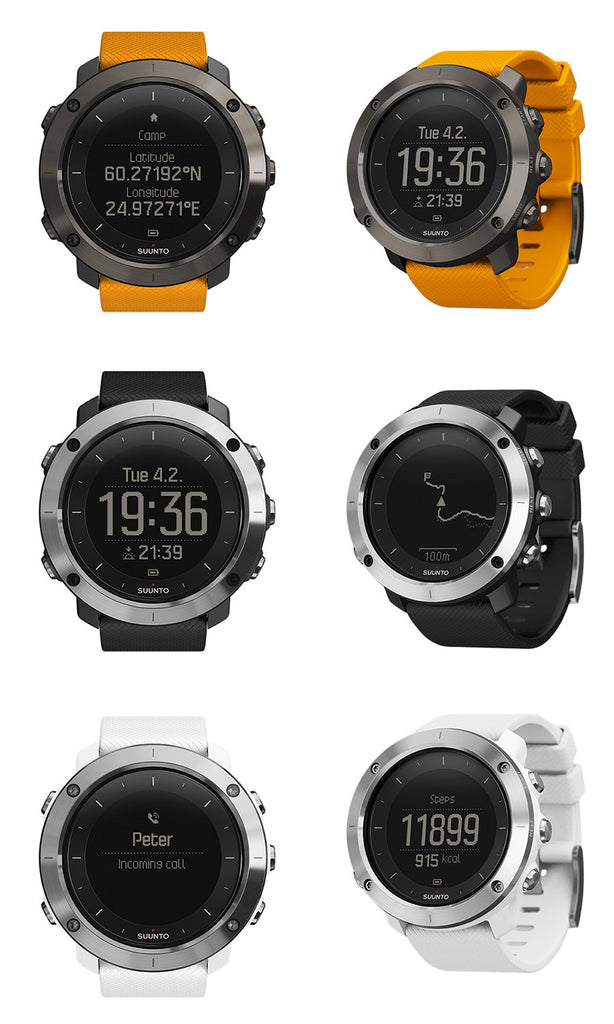Suunto Traverse

The idea (as I can gather) behind Suunto's release of the new Traverse is to make what is arguably your most complicated piece of outdoor gear easier to use, more reliable and more accurate. The problem with technology is that there is too much of it and these days the amount of function that can be built into an instrument the size of a wrist watch is literally endless. However while some extra functions can be useful, they can negatively effect a device in a few ways - They use more CPU processing power which if a product is not well designed can lead to CPU crashes (ie. not a good thing for reliability). And having more functions means the interface needs to be more complicated. When you're dealing with things such as GPS's with only five buttons the last thing you want to be doing when you're stuck out on an exposed ridge line at 2:00am is figuring out how to access the 'back track' function on your watch.
The issue for technology companies however is that adding more functions into a device makes for such an easy sell and it is so easy to do. For mountaineers, climbers, hikers, trekkers or any activity that relies on navigation - reliability and accuracy are key . So when I found out that Suunto were releasing a dedicated GPS watch for outdoor users that cut out the sporting jargon and the idea of adding or customising 'apps', but beefed up its satellite sensitivity, simplicity and making it more robust, I was impressed that someone had taken a step back in a more 'traditional' direction.
Before actually using the watch here are a couple of things that I was impressed with:
- Built to military standards. I'm not one of those military enthusiasts by any means. I steer clear of camo and army disposal shops. But I do know that when things are built to military specs (MIL-STD-810G) they are generally built tougher than they need to be. Take for instance Camelbak bladders - the standard ones are tough enough. You can fill them with water and drive a car over them and they won't bust, but the good ol' army guys aren't happy with that, they need them to be tougher. On a lot of items, having military standard just means they are heavier and clunkier then they need to be. But this watch comes in lighter and smaller than the Ambit3 so I am quite happy that what is usually regarded as a more fragile piece of kit is tough enough to be wearing when a grenade goes off.
- GPS and Glonass satellites. The Cold War gave us a lot of technology. Thankfully now that everyone is getting on like best buddies (tongue half in cheek) we can share all the technological advances around. While any satellite instrument is commonly referred to as 'GPS', the term is actually just referencing USA satellites - 'Glonass' is the Russian equivalent. Using both systems gives the Traverse access to twice as many satellites meaning it takes less time to fix onto them for bearings, saves battery power when searching and makes it more accurate.
When I got my hands on one to try out I was impressed with a couple of other things:
- It's weight and size. Compared to a standard Casio, this is still a big watch. However because the device is more efficient on batteries they have been able to cut the weight a little by reducing the size of the battery when compared to the Ambit3. They also have incorporated the antenna into the bezel instead of protruding onto the strap so this given the watch a cleaner look and smaller size.
- Easy to use interface. This is the big one. I hate reading instructions. A successful trip to IKEA for me is being able to go, by a bed, bring it come and build it without having to glance at the cartoon instruction booklet that always makes me feel a little stupid because "I" (the customer) am depicted as a little balding man scratching his head with a question mark hovering above me. Maybe it is this belittling depiction that puts me off instructions, but I like to think that it's because I like problem solving and discovering. In any case I don't like reading instructions. Because the aims of the watch are simpler, the interface is simper. Within a day of having the watch and stopping for 30 seconds here and there to press a few buttons I had easily worked out how to customise the home screen, record and view activities, set up the navigation side of things and basically use the watch as what I call 're-active' navigation where you get somewhere and work out where you are (as opposed to pro-active navigation where you pre-load routes and waypoints before you head out). What is particulaly useful is that there are a number of functions (including marking Points of Interest) that are accessed by holding one button on the home screen. There is not so much switching between modes to access different functions as there is with things like the Ambit series. I have begun to delve into the pro-active navigation side of the watch and so far it is also proving quite simple via Suunto's Movescount program.
There are a bunch of other things that the watch does and it is by no means backwards in its technology. It Bluetooths to your phone for crying out loud, I won't list everything here as Ill be here all day but you can expect everything an outdoor watch should have regarding weather, altimeter, depth meter, storm warning , sunrise/set times Etc. Check out Suunto's list of functions here
Who would benefit from the Traverse watch? Basically any one who would normally carry a hand held GPS (or wishes they would) is, I think, the person who Suunto are aiming the Traverse at. People who have learnt the limitations and unreliability of using smartphone GPS's outside of phone range is another. As they seem like a good idea when you're sitting in your bedroom dreaming of where you want to go, but reality in the field can be very different. As far stats go, yes you will have distance, time, altitude and pace data but if you're an avid runner or cyclist looking for a GPS navigation watch with training programs and progress data functions, you need to step it up to the Ambit3.

Matt
doesn't like asking for directions.
